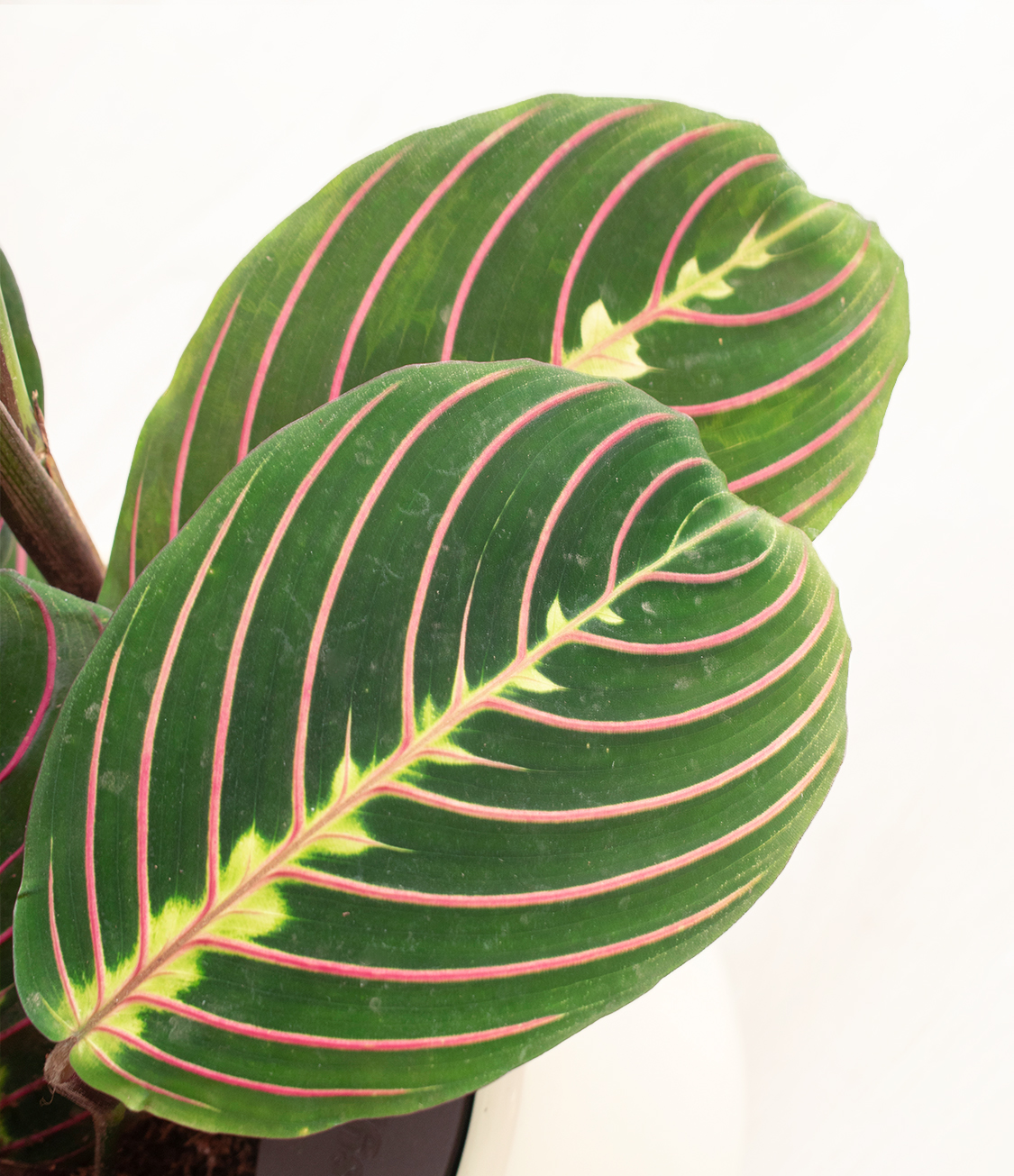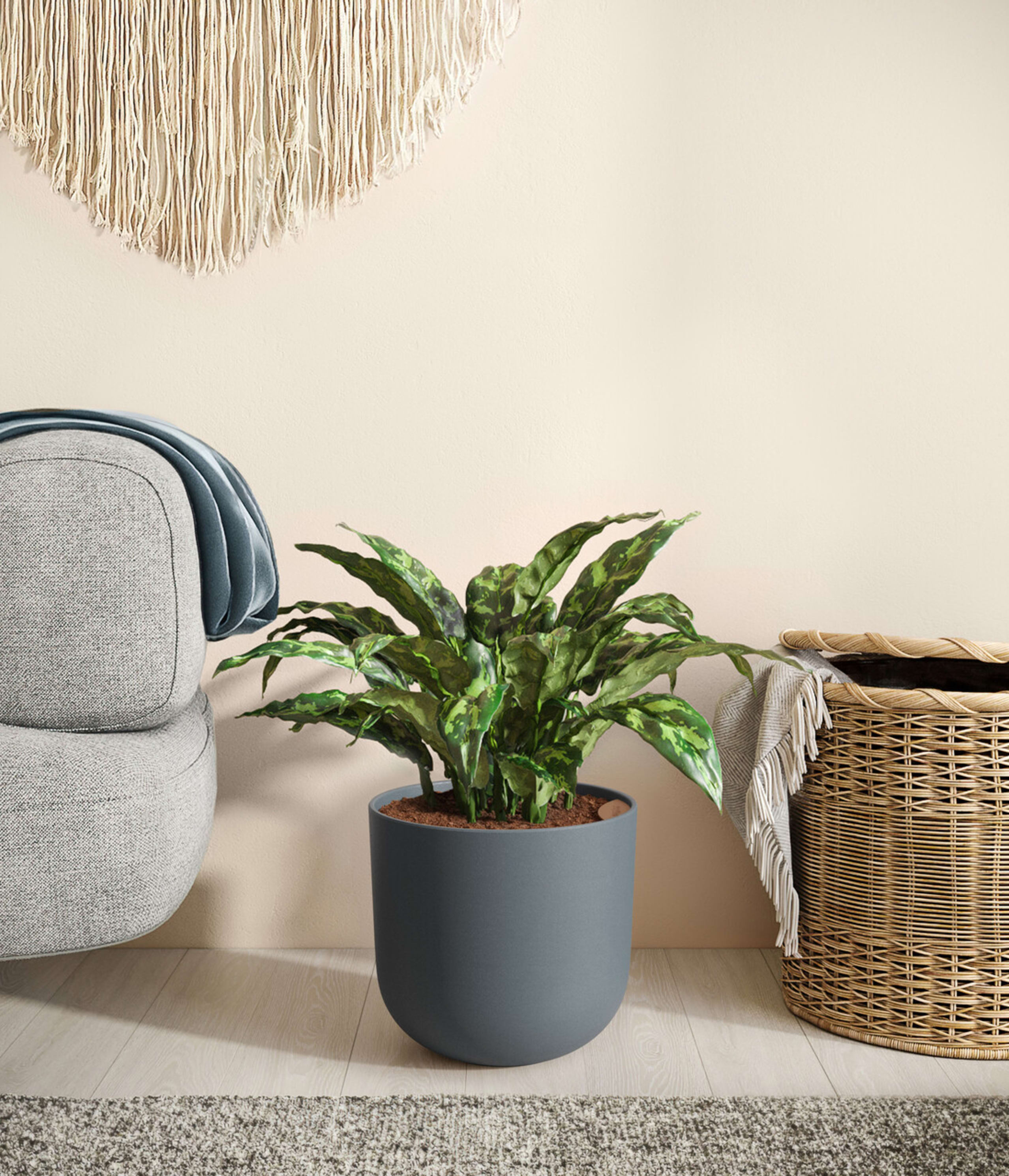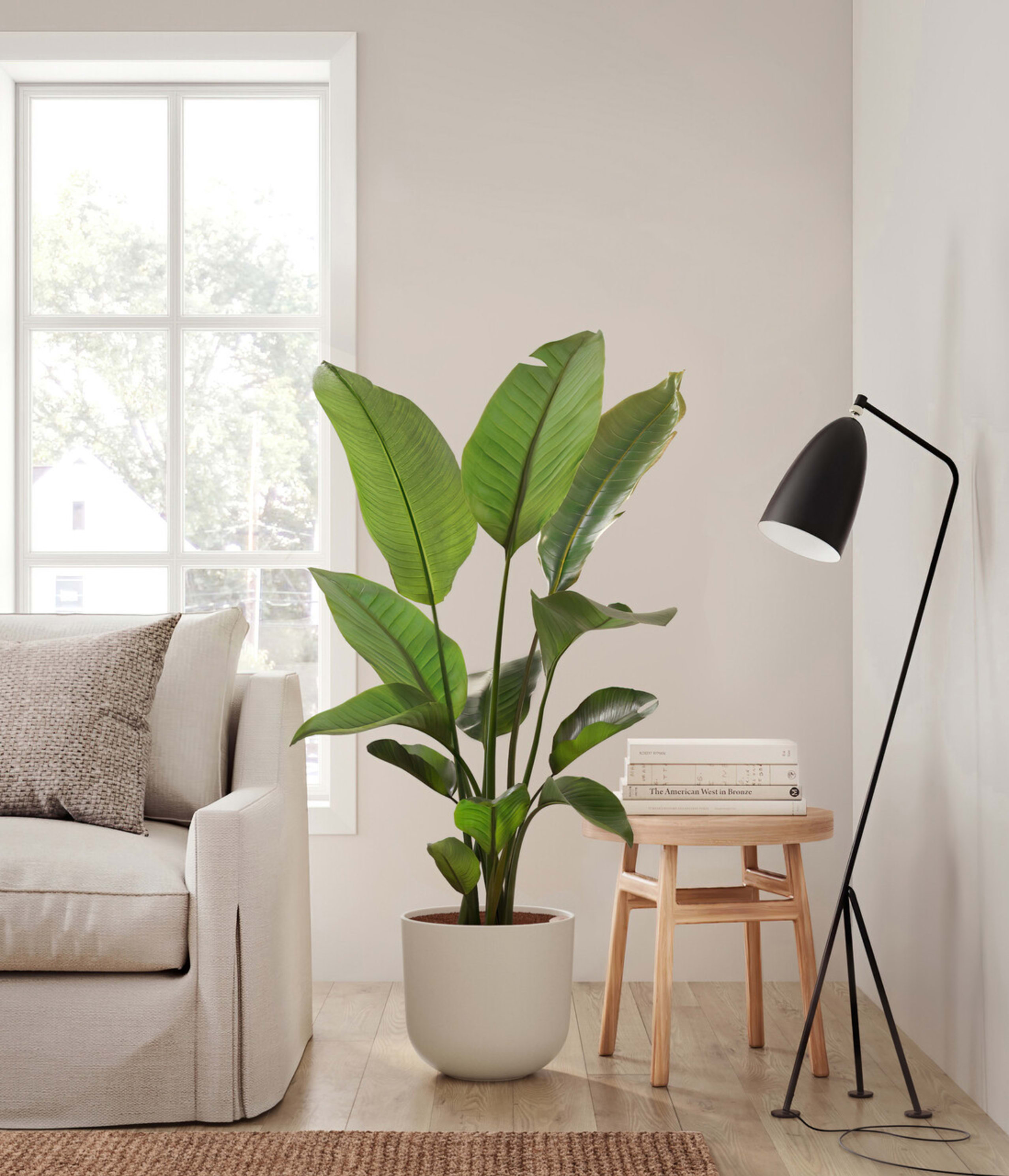Plant care library / Prayer Plant
Prayer Plant Care
About Prayer Plant
One of the most distinguished tropical plants, the Prayer Plant is best known for its magnificently decorated leaves. Velvety green with yellow splotches and arching red veins connecting the leaf margins, this unique plant instantly adds radiance to any space.
Potted in a premium quality self-watering pot with a soft matte finish, the Prayer Plant can reach up to a foot indoors. As a low-growing, tropical plant, it thrives best in warm, humid environments, so be sure to keep your Prayer Plant somewhere cozy to help it feel at home.
Other common names
- Maranta leuconeura
- Praying hands
- Erythroneura
How Often Should I Water My Prayer Plant?
With a Prayer Plant, self-watering is key. It's crucial to keep the topsoil moist at all times, but avoid overwatering, or else you'll risk root rot. Self-watering prevents over-watering and ensures the right amount of water is released into the root system. With easyplant, watering your prayer plant is simple. Make sure to check the easyplant reservoir once a month and fill it when empty, and you're all set!
Without an easyplant, Ensure your plant receives water every 7-14 days, ensuring the soil is around 50% dry in between. You'll need to increase the watering frequency if placed in brighter light and decrease it if situated in a darker area.
Prayer Plant Light Needs
Prayer plants grow best in a space with bright indirect light, where the sun rays are diffused. Avoid placing it in spaces with low light, direct sunlight or spaces without natural light.
Prayer plants appreciate indirect light over direct sunlight, flourishing most in areas that are shaded yet warm. Positioning your Prayer Plant in front of a northern-facing or eastern window is optimal.
Prayer Plant Care
If you’re in search of a unique, eye-catching houseplant that’s relatively easy to maintain, the Prayer Plant is calling your name. With indirect light, warm temperatures, and high humidity, the vibrant Prayer Plant will thrive. To help it grow optimally and evenly, occasionally dust the leaves and rotate the pot by a ¼ turn once a month. While the Prayer Plant is not known for its flowers, it can sometimes produce small blooms. If you notice any that start to fade and die off, feel free to remove them. Although not as critical as with frequently blooming plants, this practice can still help your Prayer Plant focus its energy on maintaining overall health and producing new growth. Remember, removing spent flowers is a normal part of care for plants that bloom.
How Big Do Prayer Plants Grow?
The Prayer Plant grows slowly. With the right warmth and humidity, the plant generally reaches up to a foot tall at its peak. In lower light, it will remain smaller, typically reaching anywhere from six to 12 inches in height.
With an average stature of 10 to 12 inches high and spreading up to 15-18 inches wide, prayer plants make the ideal "fillers" for large planters due to their lush leaves blending in magnificently with other household plants. It takes approximately five years for these low-growing perennials to reach maturity - during this period, you'll find that their leaf size will double.
Temperature & Humidity
Optimal home temperatures for these plants range from 65-70°F and should never drop below 55°F. To prevent sudden climate changes that can stress the plant, be mindful of humidity levels if indoor temperatures exceed the low 60s, as they are especially conducive to their health and well being.
Prayer plants thrive in a moist setting and can tolerate lower humidity levels. A humidity level of 50% or more is optimal for them, whereas those with higher sensitivity will require an atmosphere with slightly more moisture at around 60%. Adding a pebble tray or humidifier will help to maintain the desired levels.
Are Prayer Plants Toxic for Pets & Kids?
It should come as a major relief for plant lovers and parents that the Prayer Plant is not considered toxic to pets or children. As with all plants, it's important to remain cautious when dealing with plants, as touching and ingesting them can still cause certain reactions.
Prayer plants are non-toxic to cats and dogs, but still, you should monitor your pet’s activity around the plant closely. Though there are no potential harmful effects, even if your pet ingests a small amount, it's best to keep your pet away from the plants just as a precaution.
Troubleshooting Common Problems with Prayer Plant
The Prayer Plant is a low-growing, spreading plant that thrives best in warm, moist environments. While they are fairly easy plants to care for, Prayer Plants don’t do well with too much sunlight. If you start to notice the plant looking washed out and developing brown blotches on its leaves, try moving it to a spot with a bit less light to see if that improves the issue.
Prayer Plants may show signs of distress if their soil is completely dry, with leaves drooping and slowly browning while curling. If your Prayer Plant's pot has fully dried out, it will require a deep soak to regain its health.
Frequently Asked Questions about Prayer Plant Plant
- What is special about a Prayer Plant?The prayer plants, often referred to as Obedience Plant or Praying Hands, are aptly named due to their leaf movements which mimic the act of praying. At night, when it is dark out, these leaves fold together like hands in unison during prayer.
- Where is the best place to put a Prayer Plant?To keep your prayer plant healthy, be sure to place it near a window that provides indirect sunlight. Direct sun may cause the leaves to wither and burn or display discolored blotches with reduced vibrancy.
- How do you take care of a Prayer Plant?Prayer plants require indirect, bright light and temperatures ranging from 65-70°F. It is important to water these plants regularly, allowing the soil to become slightly dry between watering. Additionally, a humidity level of 50% or more is optimal for them.
- Are Prayer Plants hard to care for?Prayer Plants are generally easy to care for and thrive in warm, moist environments with indirect light. They are low-growing plants that don't need too much attention or water ,which makes them a great choice for beginner plant parents. However, they require consistent humidity levels and protection from direct sun to stay healthy.

 Small Plants
Small Plants Medium Plants
Medium Plants Plants Collections
Plants Collections Large Plants
Large Plants Huge Plants
Huge Plants